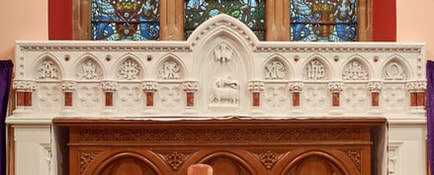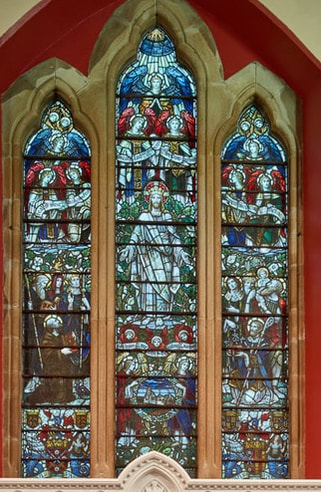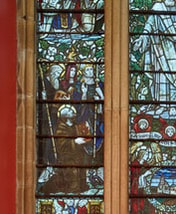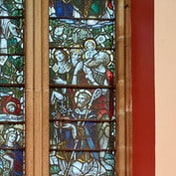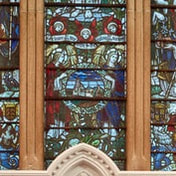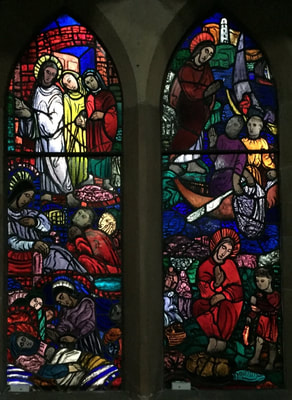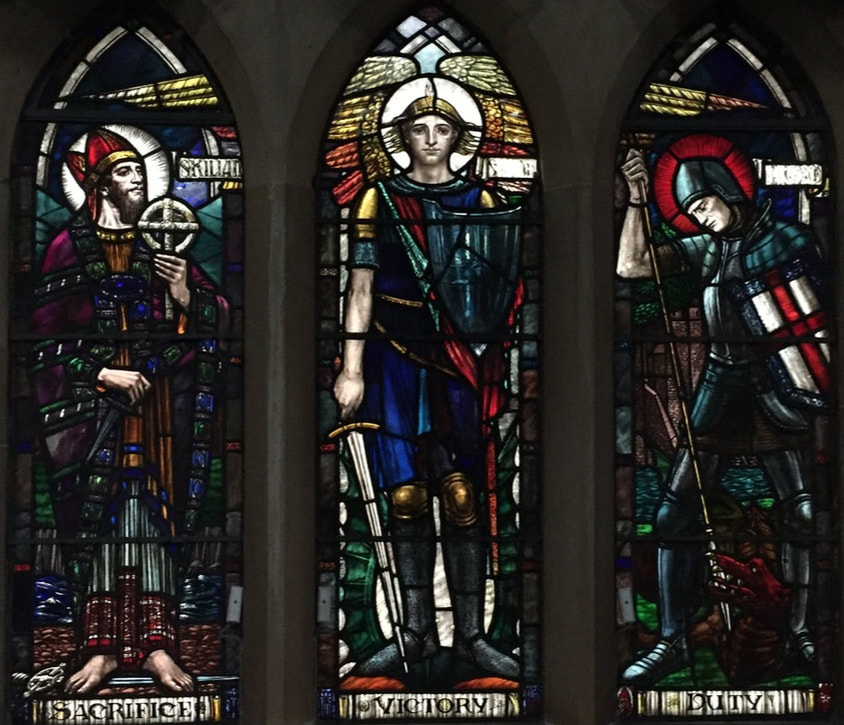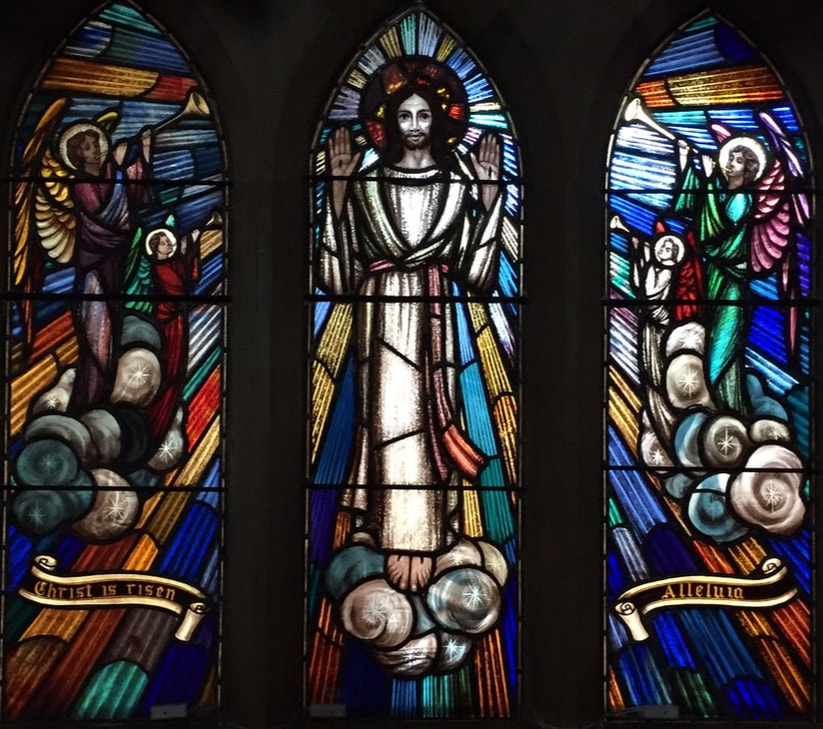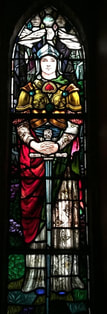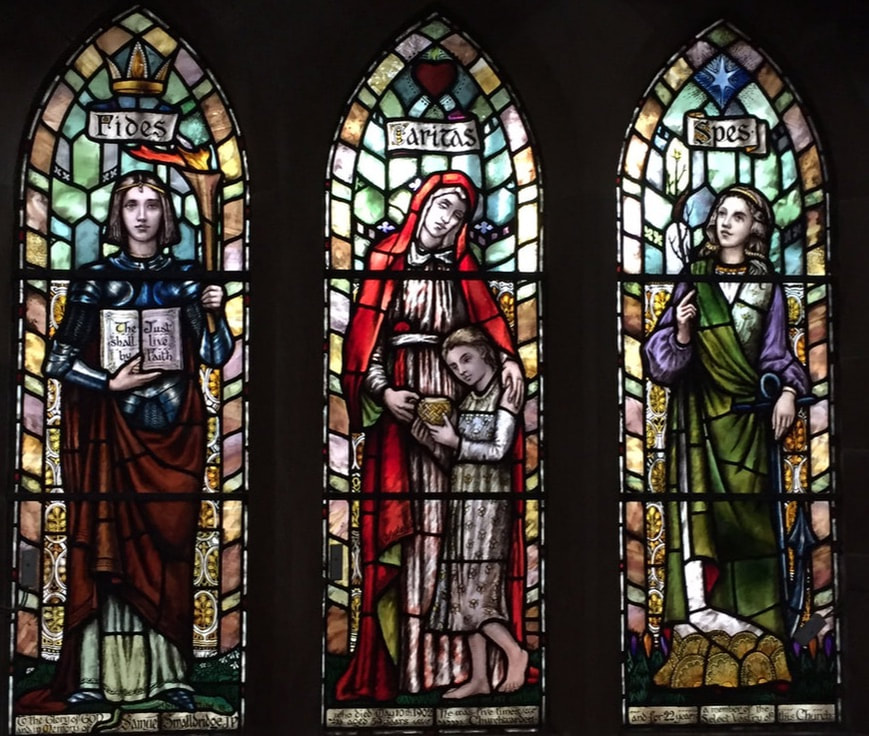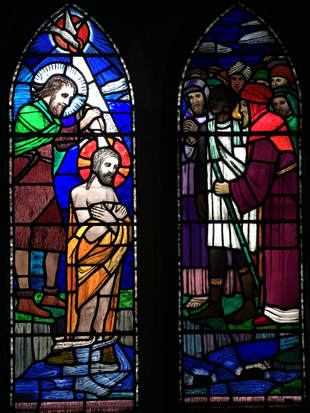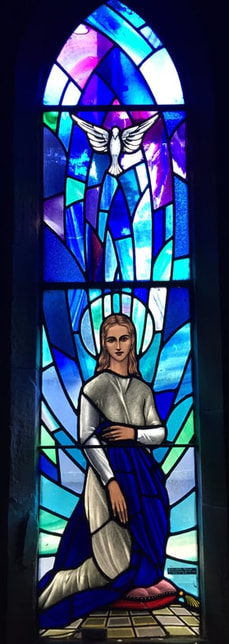Our Home
The Beginning of Christianity in Howth
|
|
The first church built in Howth was on the site of Howth Abbey, in Howth village. It was founded by Sightrygg, King of Dublin around 1042. Around 1235, the old church was amalgamated with the church on Ireland's Eye and a new church was built - founded by Luke, Archbishop of Dublin on land granted by Sir Almeric St. Lawrence. Little remains of either of these churches and most of the present abbey dates back to the late 14th century or early 15th century. The church was a collegiate church - served by a collegium of three or more priests. A private house to the south-east of the church was the priests' house. Parishioners worshipped in the abbey until about 1630.
After that date worship was conducted in Lord Howth's private chapel which was situated on the right hand side of the main avenue to the castle. |
Our Church Today
|
The Parish is situated at the northern tip of Dublin Bay. Howth was at one time a small fishing village but is now a busy suburb of Dublin. St Mary's Parish Church is situated at the entrance to the grounds of Howth Castle and Deerpark, less than five minutes walk from the Howth DART Station. The Parish covers a wide area including Sutton, Baldoyle and Bayside as well as Howth.
Within the Parish boundary there is a Methodist congregation (in Sutton), a Presbyterian congregation (in Howth) and four Roman Catholic congregations (in Howth, Sutton, Baldoyle and Bayside). Ecumenical relations are excellent |
|
Inside our Church
|
The Reredos (behind the main Holy Table)
In the centre of the reredos is the lamb with a cross depicting Christ and above him the dove symbolising the Holy Spirit. The designs include "A" - alpha and "W"- omega, the first and last letters of the Greek alphabet ("I am the alpha and the omega" Rev.1,8) Also depicted are the "fleur- de - lis", the Chiro, and IHS (the first 3 letters of the name of Jesus in Greek). The reredos was given in 1910 in memory of James Hawkins and his wife. |
The Holy Table of Irish oak came from Rahan church, Co. Offaly. Rahan church closed some years ago and we are most grateful for their gift to us.
|
|
Fortitude
This small window depicts the virtue of 'fortitude'. The window is the work of Ethel Rind of Dublin in 1910 and is in memory of Henry Mac Dougall and his sister - Henrietta. Faith, Charity and Hope
This is the work of A.E.Child of Dublin 1905. A.E.Child was the pupil of Christopher Whall (1849-1924) who was a leading figure in the English Arts and Crafts movement. He set up 'An Tur Gloine' (Tower of Glass) in Dublin. This was a studio to encourage Irish artists at the beginning of the 20th century and Sarah Purser was the administrator. Baptism
This window, in memory of a former rector Rev Canon H.J.L. Armstrong, was placed here beside the font before the font was moved to the front of the church. The window depicts the Baptism of Christ by John the Baptist and the Baptism of the Ethiopian eunuch by Philip (Acts 8, 38). This window is the work of Catherine O'Brien of Dublin in 1961. St. Mary
Appropriately for our side chapel this window depicts Mary with the Holy Spirit hovering above her. It was placed here in 1973 in memory of Hugh Usher and his son Howard. |
The East Window
Located behind the reredos, this is reckoned to be one of the finest windows in the Diocese of Dublin. Designed and executed by James Powell & Sons of London in 1910, it was given in memory of the 4th Earl of Howth, Sir William Ulick Tristam St Lawrence. The window depicts 'Christ the Healer of mankind'. Christ occupies the eye of the window and is represented crowned and extending his hands - inviting all to come. The invitation to his sacrament for healing is vivid. The inscription above the figure of Christ reads "He healeth those that are broken in heart, and giveth medicine to heal their sickness" "Great is the Lord and great is his power, yea, and his wisdom is infinite". From the base of the central light grows the rose tree, meant to remind us of the quotation from Revelation "The leaves of the tree are for the healing of the nations" (Rev. 22, 2). On either side are groups of saints who, in their lives, have extended Christ's healing power. On the left you can see the three great Irish saints - St. Patrick, St. Brigid and St. Columba and kneeling below them is St. Nessan holding the Garland of Howth. On the right side of the window you can see some of the saints whose names are connected with the St Lawrence family - St Lawrence, St Nicholas and St Christopher: kneeling in front, with a model of his church, is St. Fintan. Below the figure of Christ it is interesting to note the local feature of a picture of Howth Abbey (where the late Earl is buried) and behind the abbey the West Pier of Howth harbour can be seen. The coats of arms in the bottom left (4th Earl of Howth's own coat of arms) and in the bottom right hand corner (his father's coat of arms) bear the motto "Qui panse" (old Norman French = 'which heals'). Sir Amoricus Tristam, ancestor of the Earl of Howth, received his title after the battle of Evora, fought on the ground where the church now stands. Being wounded in the battle, and seeing a dog-rose near by, he asked for the petals to be put in his wounds, which, he said, would heal him. Hence the family motto 'Qui panse'. Miracles
Beside the baptismal font, this window by Evie Hone, illustrates the miracles of Jesus. It was placed here in 1943 in memory of Rt Hon Andrew Jameson. Sacrifice, Victory and Beauty
Another of Ethel Rind's windows, this is a memorial to those who died in the Great War. It was executed in 1920, and depicts St Kilian (Sacrifice), St Michael (Victory) and St George (Duty). A Roll of Honour listing the names of all from the Parish who died in the Great War (1914-1918) is to be found in the church porch on the north wall. In all some 94 names are listed giving us the poignant reminder of the effect of the Great War on the village of Howth. Resurrection
The central panel of this window shows Christ risen in glory. He is flanked by a panel on either side showing angels blowing trumpets. This is the newest window having been dedicated in March 2004 to the glory of God and in memory of Ron Pickard and Tess Bamford Pickard. |
Side Chapel
The font was moved from this site in 1992 for two reasons. Liturgically there is to-day a greater emphasis on the congregation being able to "see and participate in" a baptism and secondly by moving the font it left an area available for use as a side chapel. We use this chapel when there is a small congregation - e.g. Celebrations of Holy Communion on Saints' days.
The chapel was dedicated appropriately on All Saints' Day 1992, "To the glory of God and in loving memory of all the faithful departed especially those who have worshipped in St. Mary's in the past years". This Chapel serves to remind us that many generations of faithful worshippers have contributed to the atmosphere of prayer and worship in St. Mary's.
Other furnishings - candlesticks, cross, rails, carpet and frontals - are gifts in memory of parishioners.
The font was moved from this site in 1992 for two reasons. Liturgically there is to-day a greater emphasis on the congregation being able to "see and participate in" a baptism and secondly by moving the font it left an area available for use as a side chapel. We use this chapel when there is a small congregation - e.g. Celebrations of Holy Communion on Saints' days.
The chapel was dedicated appropriately on All Saints' Day 1992, "To the glory of God and in loving memory of all the faithful departed especially those who have worshipped in St. Mary's in the past years". This Chapel serves to remind us that many generations of faithful worshippers have contributed to the atmosphere of prayer and worship in St. Mary's.
Other furnishings - candlesticks, cross, rails, carpet and frontals - are gifts in memory of parishioners.
